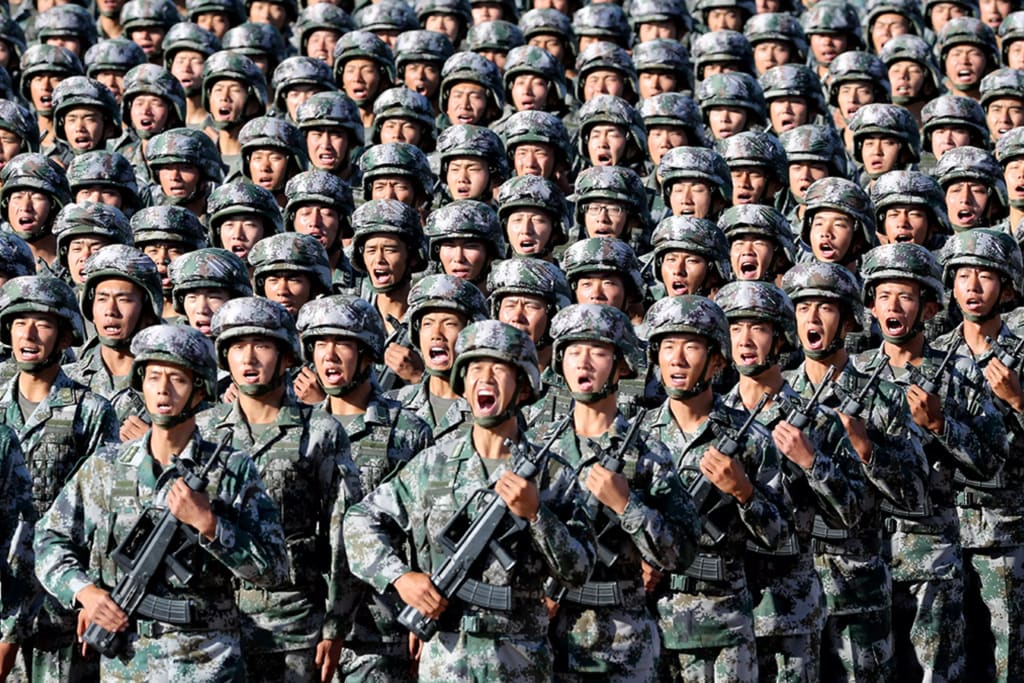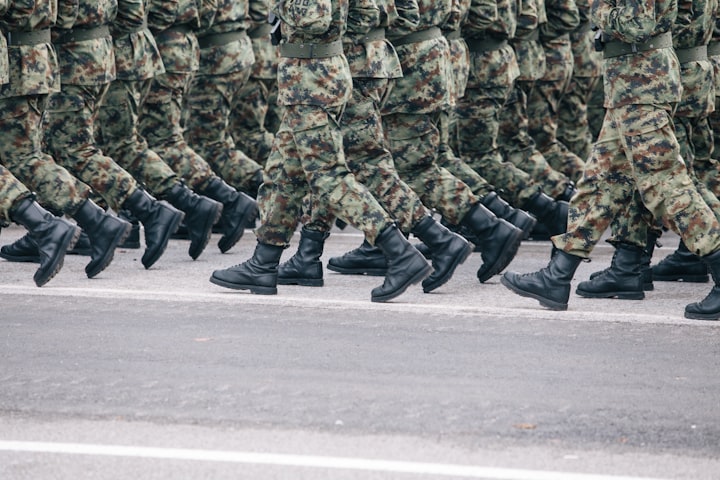The chinese military
A comprehensive over view

Introduction
The Chinese military, officially known as the People's Liberation Army (PLA), is the armed forces of the People's Republic of China. With its roots dating back to the Chinese Civil War, the PLA has evolved into a formidable military force. This article provides an in-depth look at the structure, capabilities, and modernization efforts of the Chinese military.
Structure and Organization
The PLA is divided into five major branches: the Ground Force, Navy, Air Force, Rocket Force, and Strategic Support Force. Each branch is responsible for specific operational domains. The Central Military Commission (CMC) serves as the highest military authority in China, overseeing the PLA's strategic direction and management.
Active Personnel and Reserves
As of 2021, the Chinese military boasts one of the world's largest standing armies, with approximately 2 million active personnel. Additionally, China maintains a sizable reserve force, allowing for rapid mobilization if necessary. The conscription system provides a steady stream of recruits, ensuring a continuous supply of well-trained personnel.
Modernization and Technological Advancements
China has made significant strides in modernizing its military capabilities. The PLA has invested heavily in advanced weapon systems, cyber warfare capabilities, and space-based technologies. The country's defense budget has consistently increased over the years, reflecting its commitment to military modernization.
Land Force Capabilities
The PLA Ground Force is the largest branch, responsible for land-based operations. It possesses a diverse array of tanks, artillery, and infantry fighting vehicles. The force has undergone significant reforms to enhance its mobility, firepower, and joint operations capabilities.
Naval Capabilities
The PLA Navy, or PLAN, has undergone rapid expansion and modernization. It now operates aircraft carriers, submarines, destroyers, frigates, and amphibious assault ships. The PLAN has also developed capabilities in naval aviation and ballistic missile submarines, bolstering its ability to project power and protect China's maritime interests.
Air Force Capabilities
The PLA Air Force, or PLAAF, has seen considerable advancements in recent years. It has expanded its fleet of modern fighter aircraft, including stealth fighters and long-range bombers. The PLAAF has also developed aerial refueling capabilities, strengthening its ability to conduct long-range operations.
Rocket Force and Strategic Support
The PLA Rocket Force is responsible for China's ballistic missile arsenal, including nuclear weapons. It has made strides in developing hypersonic missiles and anti-ship ballistic missiles. The Strategic Support Force focuses on space and cyber operations, enabling the PLA to enhance its situational awareness and conduct information warfare.
Conclusion
The Chinese military, with its growing capabilities and modernization efforts, plays a crucial role in safeguarding China's national security interests. As it continues to invest in advanced technologies and expand its operational reach, the PLA is evolving into a comprehensive and multi-dimensional force. However, the implications of China's military expansion and assertiveness in regional disputes remain subjects of international scrutiny and concern.
The People's Liberation Army (PLA) is the principal military force of the People's Republic of China and the armed wing of the Chinese Communist Party (CCP). The PLA consists of five service branches: the Ground Force, Navy, Air Force, Rocket Force, and Strategic Support Force. It is under the leadership of the Central Military Commission (CMC) with its chairman as commander-in-chief.
The PLA can trace its origins during the Republican Era to the left-wing units of the National Revolutionary Army (NRA) of the Kuomintang (KMT) when they broke away in 1927 in an uprising against the nationalist government as the Chinese Red Army, before being reintegrated into the NRA as units of New Fourth Army and Eighth Route Army during the Second Sino-Japanese War
Thank you for reading my page
One like and subscribe






Comments
There are no comments for this story
Be the first to respond and start the conversation.